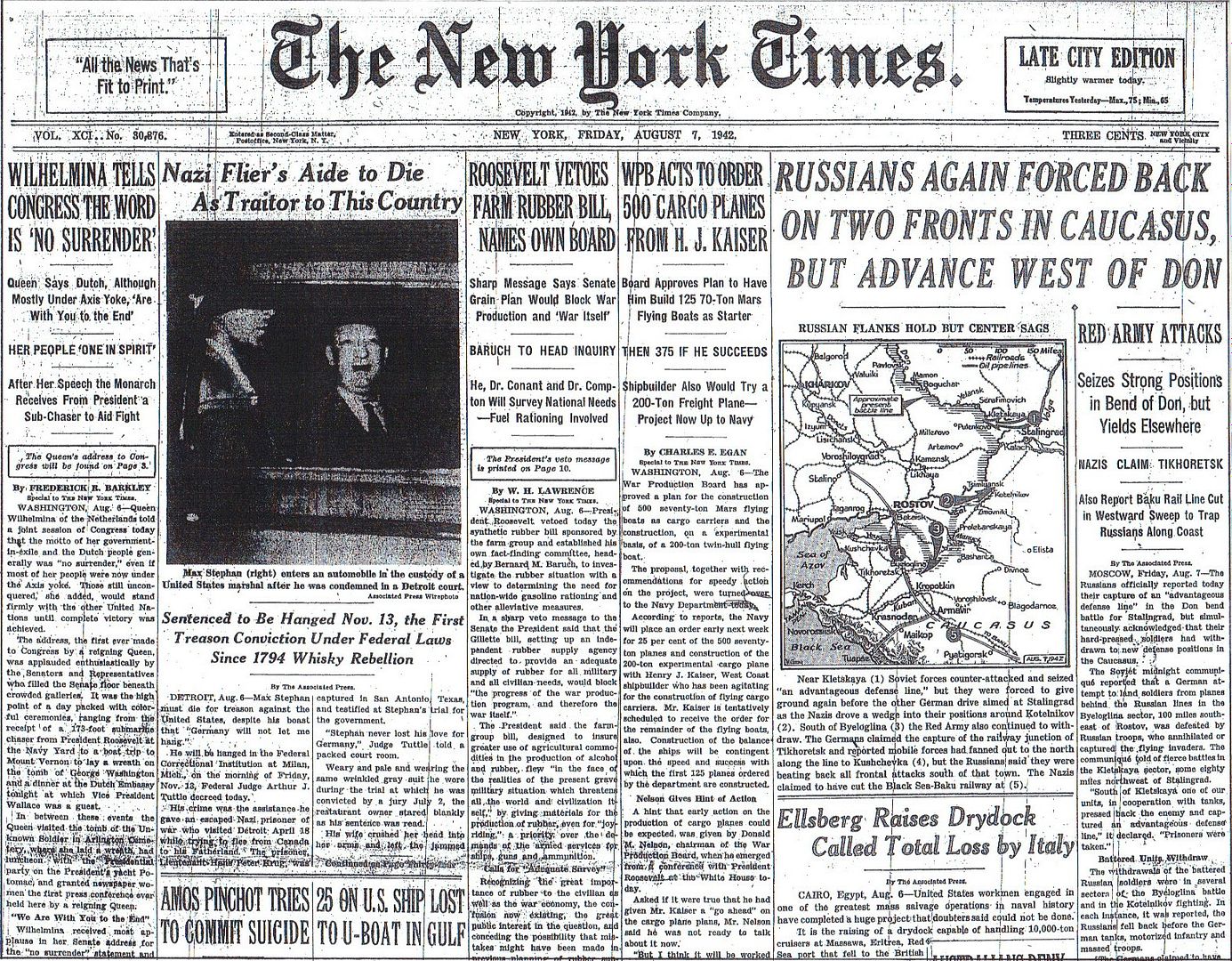
Posted on 08/07/2012 5:13:35 AM PDT by Homer_J_Simpson


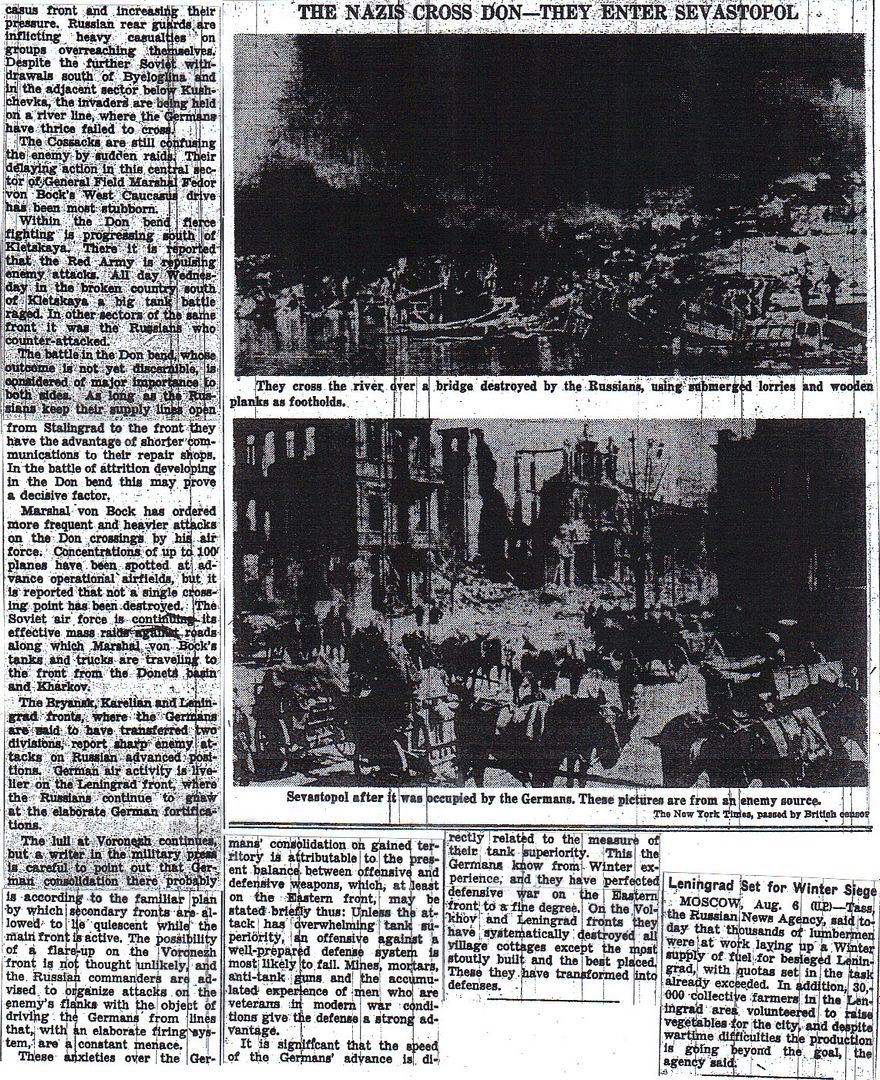
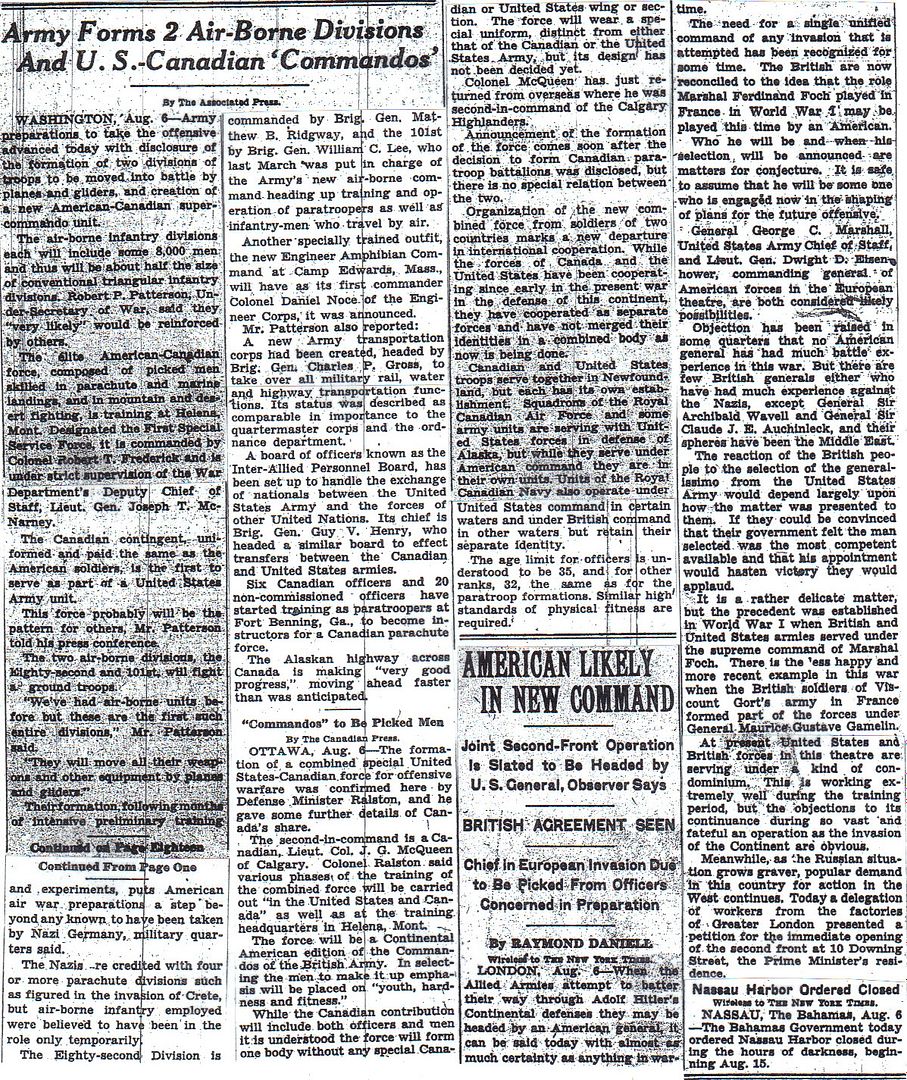

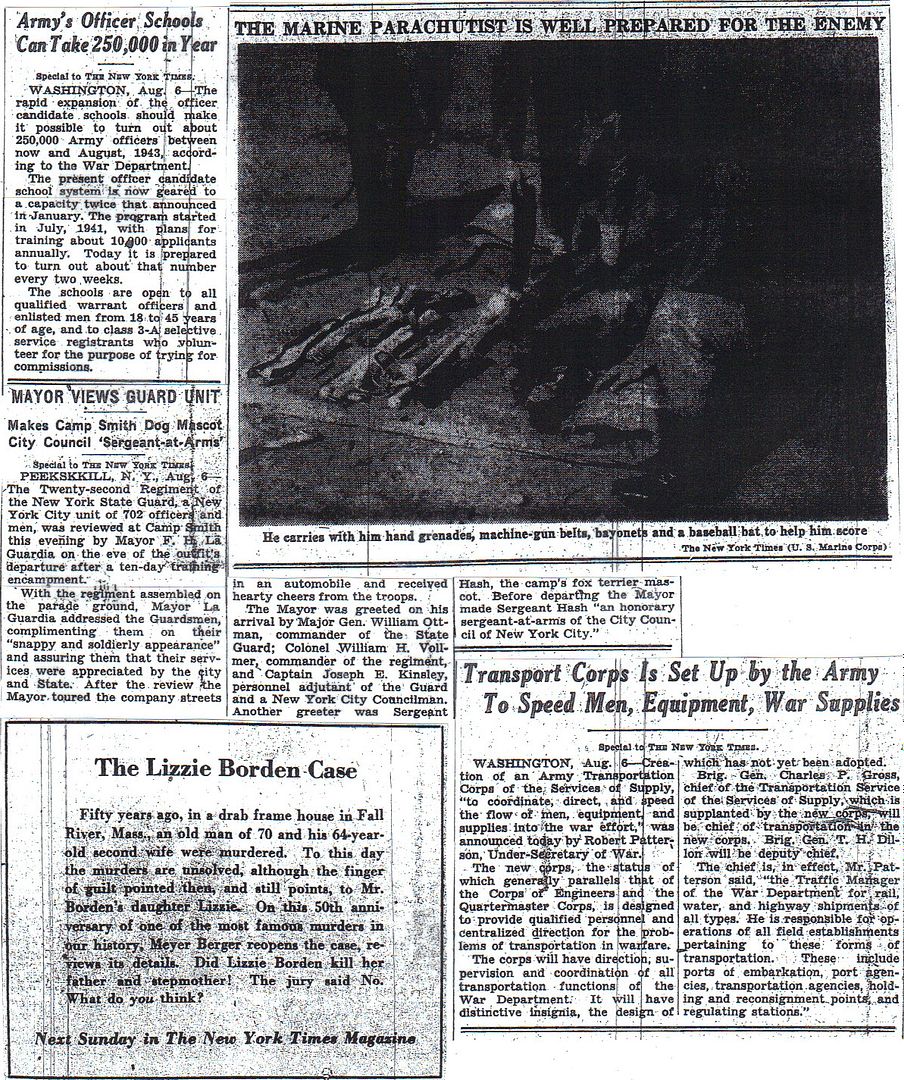
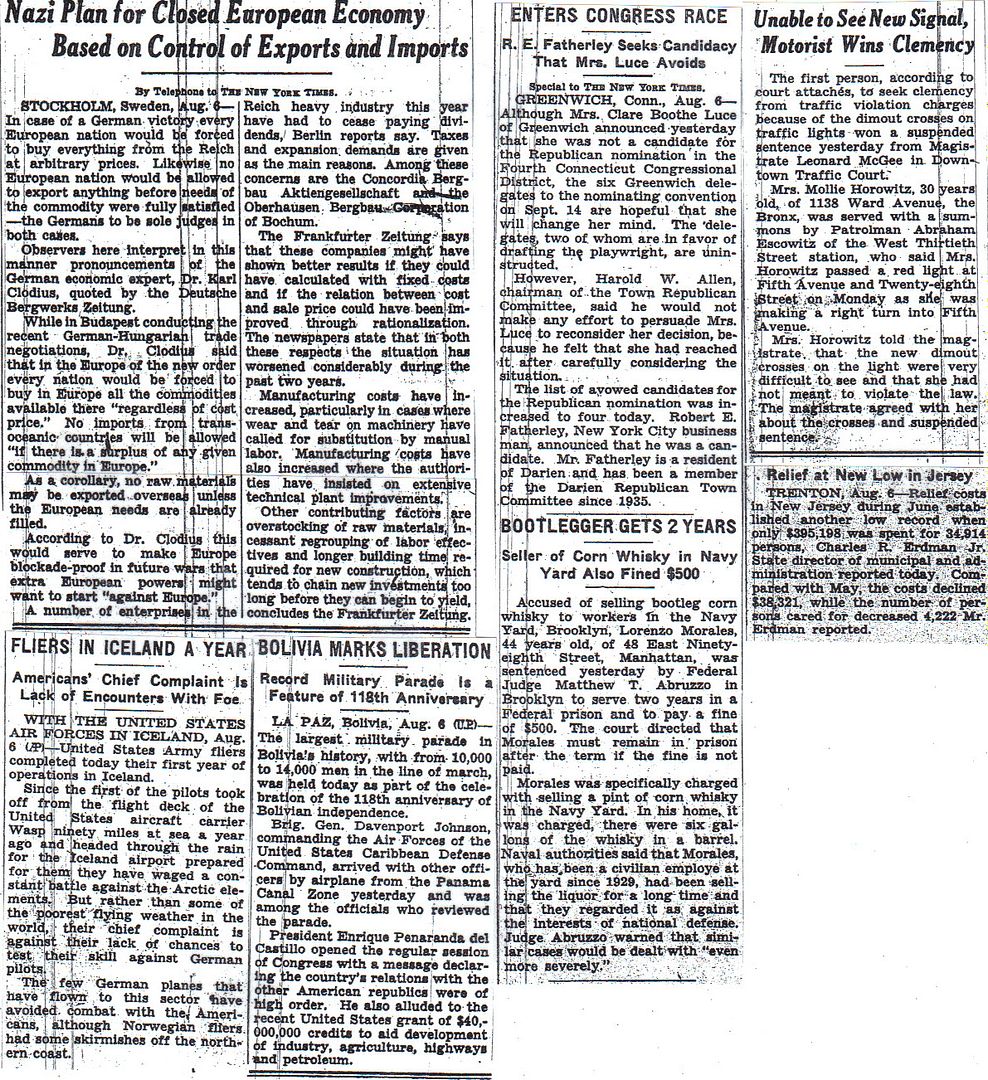
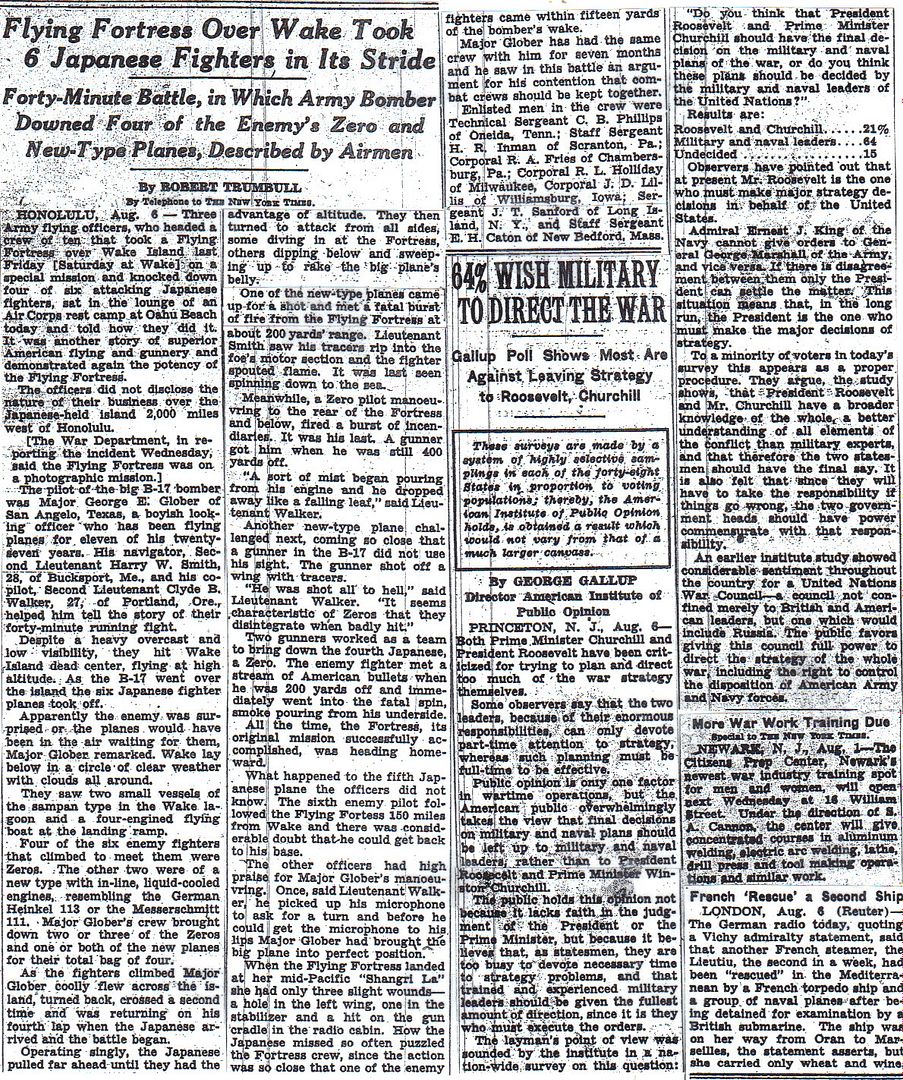
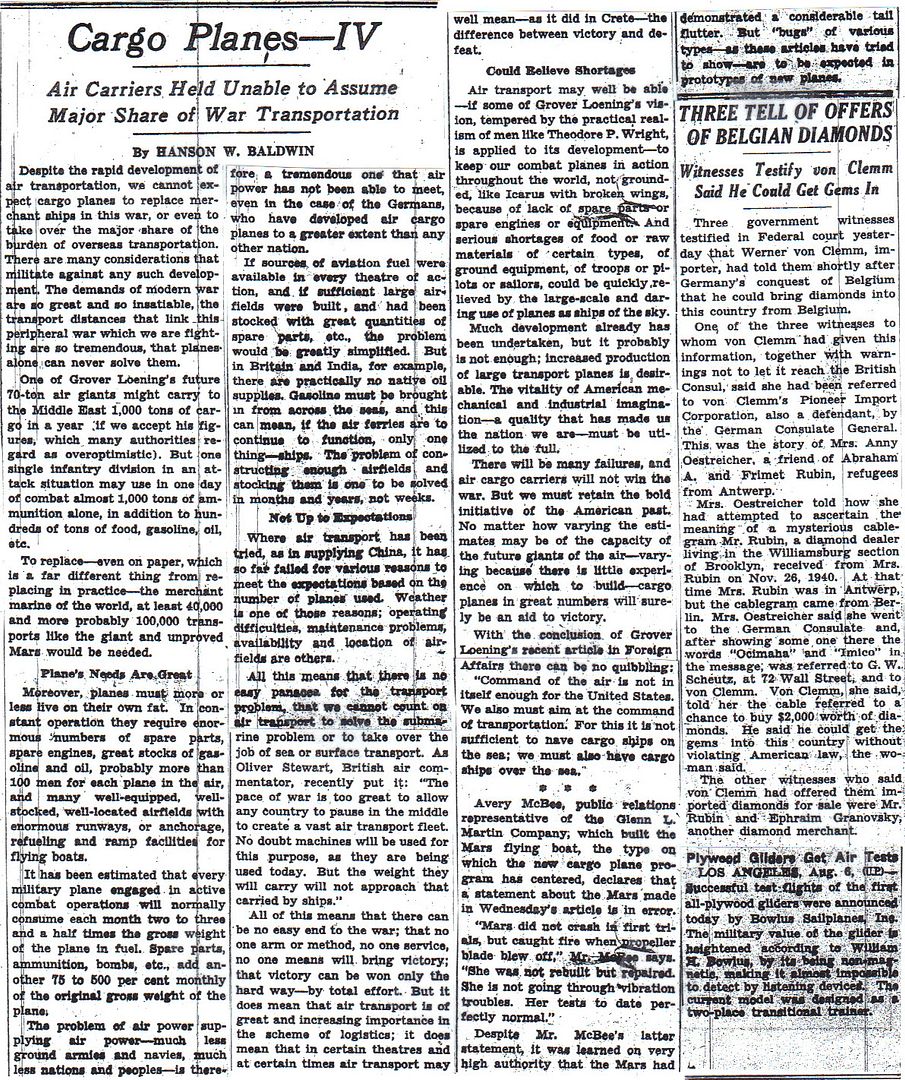
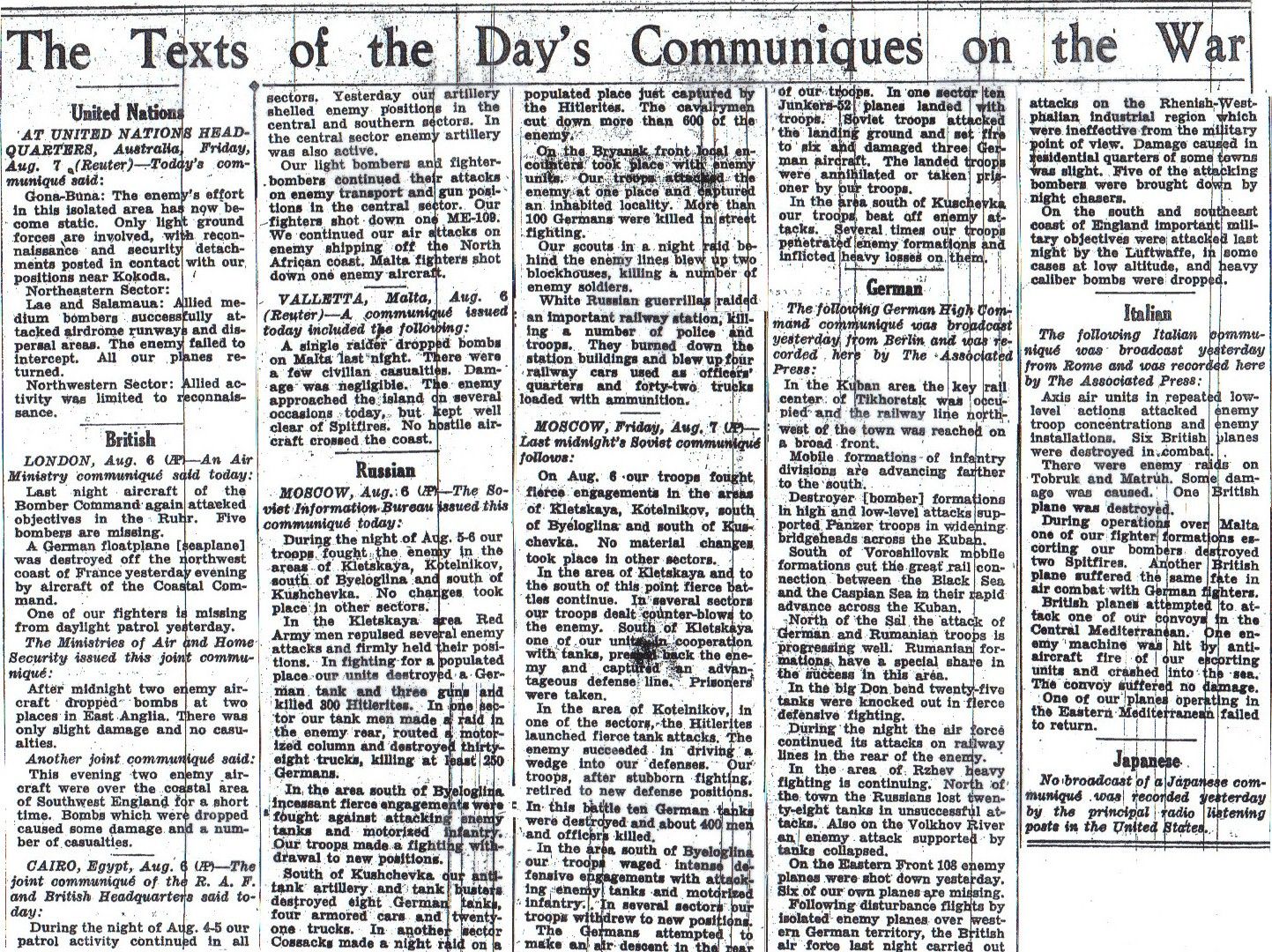
http://www.onwar.com/chrono/1942/aug42/f07aug42.htm
Americans land on Guadalcanal
Friday, August 7, 1942 www.onwar.com
In the Solomon Islands... First landings on Guadalcanal. From a US naval based task force of three carriers and support ships under the command of Admiral Fletcher, an amphibious force under Admiral Turner and 1st Marine Division, General Vandergrift, land on Guadalcanal. Smaller forces are also landed on Tulagi and Gavutu. Initially the landings receive little opposition.
In North Africa.... British General Gort is killed on the flight back to Cairo, where he was to assume tactical command of the British 8th Army. General Montgomery replaces him.
From British Palestine... The formation of a Palestine Regiment within the British Army is announced by Sir John Grigg. Separate Arab and Jewish battalions will be created within the regiment. The training and experience received by these units will prove valuable to both Arab and Jewish members in the struggles in Palestine in the postwar period.
In the Aleutian Islands... An American task force bombards the Japanese-held island of Kiska.
http://homepage.ntlworld.com/andrew.etherington/frame.htm
August 7th, 1942
UNITED KINGDOM: Submarine HM S/M Saracen is lost. Submarine HMS P 311 is commissioned.
NETHERLANDS: 987 Jews are deported to Auschwitz.
GERMANY: U-794, U-795 ordered. (Dave Shirlaw)
MEDITERRANEAN SEA: Submarine HMS Thorn is sunk by a depth charge attack from Italian destroyer Emmanuale Pessagno. There are no survivors. Location E of Gevdo Island, Crete. (Alex Gordon)(108)
EGYPT: Cairo: German fighters descended on an RAF transport aircraft over the desert today, killing Lt-Gen William “Strafer” Gott just 24 hours after Winston Churchill had appointed him commander of the Eighth Army.
The humanitarian Gott, one of the most popular generals in the Middle East, had commanded XIII Corps under Auchinleck. But many saw his leadership at El Alamein last month as fumbling and tired. Bernard Montgomery, a relatively unknown general, is flying in to fill the vacancy.
Squadron Leader (then Sgt. Pilot) H.G. James. James, only 18 years of age but with 410 hours in his log book was flying a Bristol Bombay as part of a shuttle service between Helipolis and the front. On the afternoon of 7 Aug 42 he was detailed to pick up 14 wounded soldiers from Burg-el-Arab. Gott was also to be a passenger. At 4:45 P.M. the aircraft took off and flying only 50 feet off the ground so as not to attract the attention of Luftwaffe aircraft headed back to Heliopolis.
After only a few minutes a flight of six ME 109 Fs jumped the Bombay and set afire two engines. James ordered the rear door lifted off its hinges and placed in the back of the Bombay and landed the burning plane safely on a sand plateau. It’s brakes were shot and she ran on for about eight miles.
The Germans attacked the Bombay as she ran along the sand. James ordered his passengers to bail out the open door even before the aircraft came to a stop. He and some other crew and one wounded soldier were able to get out through the cockpit floor hatch. Once on the ground they found that the rear door had not been lifted off its hinges and had closed. The aircraft was burning and there was no way to get at Gott and the others in the aircraft. (William Jay Stone)
PALESTINE: In an announcement by Sir John Grigg, Britain creates a Palestine Regiment, with separate Jewish and Arab battalions.
NEW GUINEA: The Burns Phillip ship “Mamutu” (300 tons) with a crew of 32, set out, yesterday, from Port Moresby headed for Daru on the western shores of the Gulf of Papua. On board were 82 passengers which included 28 children, who were escaping the more than 70 Japanese bombing raids on Port Moresby.
“Mamutu” was about half way across the gulf when just after 11am on 7 August 1942 the ships crew spotted a Japanese submarine several miles astern.
It was Japanese submarine RO-33, under the command of Lieutenant Commander Shigeshi Kuriyama. RO-33 had left Rabaul in April 1942 to reconnoitre Port Moresby. RO-33 and RO-34 were both later ordered to blockade Port Moresby and guide Japanese shipping into the area.
The Wireless Operator on “Mamutu”, Mr. R.J. Furbank sent a morse code message to Port Moresby to advise of the submarine’s presence. RO-33 closed in at about 19 knots and caught up with “Mamutu”. RO-33 opened fire with its 3.25” (80mm) gun. The first shot hit the radio room and killed Mr Furbank. The second shot wiped out the bridge killing Captain J. McEachern. Others shells hit the hull. Many people were killed or injured in the accurate barrage from RO-33.
Kuriyama then ordered his gunners to fire their 13 mm machine guns upon the survivors in the water. They killed as many as they could which included many women and children. RO-33 then left the scene of destruction. There were only 28 survivors from the total complement of 120 persons. One man, a European Engineer, Bill Griffin, escaped death at the hands of the ruthless machine gunners by pretending to be dead.
A B-17 Flying Fortress search aircraft dropped life rafts to the struggling survivors who eventually made it to shore. The Army signal ship “MV Reliance” which was used by the Coast Watchers, was sent from Murray Island to try to pick up the survivors. They were unable to locate the survivors. (Denis Peck)
SOLOMON ISLANDS: Guadalcanal: The first American offensive of the Pacific War began spectacularly today when the 1st Marine Division (reinforced), by heavy air and naval bombardments, landed on remote Guadalcanal, Tulagi, Tanambogo and Gavatu in the southern Solomon Islands.
Website
This first offensive action in the Pacific war comes 7 months to the day after Pearl Harbor.
The Marines commanded by General Vandegrift have close support from TF 62 under Admiral RK Turner. Admiral Fletcher with TF 16 provides air cover from carriers Enterprise, Saratoga and Wasp. The landings on Guadalcanal are not contested. The islands of Tulagi, Gavatu and Tanambogo are heavily contested.
USN warships of Task Force 16 begin a preinvasion bombardment of Guadalcanal and Tulagi at 0614 hours local. Carrier-based aircraft of the aircraft carriers USS Enterprise (CV-6), USS Saratoga (CV-3) and USS Wasp (CV-7) also conduct air strikes against the islands. At 0910 hours, the 1st Marine Division (Reinforced) initiates Operation Watchtower by landing on Guadalcanal, Tulagi, Florida, Gavutu and Tanambogo Islands.
The Australian Cruiser Squadron takes part. It consists of:
HMAS Canberra; Captain Frank E. Getting, RAN
HMAS Australia; Captain H. B. Farncomb, RAN
HMAS Hobart; Captain H. A. Showers, RAN
The squadron was commanded by a Rear-Admiral of the Royal Navy, usually Australian-born. For example, Rear-Adm Jack Crace (who commanded the squadron at the Coral Sea) was born in Australia but joined the Royal Navy. The Australian naval college only started taking students in 1913, consequently it was difficult to find flag officers of the Royal Australian Navy with the requisite experience.
Admiral Victor Crutchley, RN was one of the few officers to hold this command who was not born in Australia. Admiral Crutchley is in command of the Australian Cruiser Squadron at this time and has been placed in command of the transport screening forces by Admiral
Turner. (Mike Mitchell)
At 1315 hours local, the Japanese attack with 27 ( Navy Type 1 Attack Bomber) “Betty” bombers escorted by 17 (Mitsubishi A6M Navy Type 0 Carrier Fighter) “Zeke” fighters from Rabaul; 18USNF4F Wildcats of Fighting Squadrons Five and Six (VF-5 and VF-6) of the carriers USS Saratoga (CV-3) and USS ENTERPRISE (CV-6) drive them off and shoot down 8 G4Ms and 1 “Zeke;” 8USNWildcats and an SBD Dauntless are lost. Among the Japanese pilots on this strike is Saburo Sakai. It is this mission from which his epic return flight to Rabaul will begin. He returns alone with only one eye, one arm and one leg in a crippled Zero, 565 miles.
At 1430 hours, 9 Aichi D3A Navy Type 99 Carrier Bombers, Allied Code Name “Val,” attack and damage a destroyer; 5 “Vals” are shot down by F4F Wildcats and 4 ditch returning to their base at Rabaul.
13 USAAF B-17 Flying Fortresses of the Allied Air Forces bomb Vunakanau Airfield on New Britain Island, Bismarck Archipelago, in coordination with Marine landings. (Jack McKillop)
The 19,000 marines who landed here were not opposed on the beach-head. It is the first capture of territory from Japan so far in the war, and only token resistance was offered when the marines went on to seize a partially-completed airfield. But at the second landing on nearby Tulagi island, they ran into a stiff fight to subdue some 1,500 Japanese who resisted fiercely before they were annihilated against American losses of 150 men.
Thus, for the first time in the war American troops have wrested territory from the all-conquering Japanese. The Midway victory had altered the naval balance, and the American Joint Chiefs of Staff moved at once to plan the seizure of the southern Solomons where Japanese activity threatened to cut vital communications between Australia and the United States. Their directive of 2 July called for a two-pronged offensive towards northern New Guinea and the Solomon Islands chain. The ultimate objective of both offensives was to recapture Rabaul and break the barrier of the Bismark Islands. Japanese reaction to the Guadalcanal challenge is not expected to be long in coming.
Japan has a strong striking force of bombers and fighters based at Rabaul and will be determined to thwart the US offensive. The first Japanese reaction to these landings arrives in the form of an afternoon air strike from Rabaul. Among the Japanese pilots on this strike is Saburo Sakai. It is this mission from which his epic return flight to Rabaul will begin. He returns alone with only one eye, one arm and one leg in a crippled Zero, 565 miles.
Bill Paull adds: On 7 August, 1942 “I” Battery, 3rd Bn., 10th Regiment, 2nd Marine Division fired the first American offensive artillery round (75mm) of WW2
on the island of Tulagi in the Solomon Islands.
Some “dumb cannoneer” did save it and manage to get home with it. Until last year, it has always been proudly displayed at the annual reunion of our “Forgotten Battalion.” Since our ranks are thinning rapidly, last year we voted to offer it to the Marine Corps Museum at Quantico, Virginia. They were happy to get it and it now is on prominent display.
The late Arnold Gladson added: On this date, 56 years ago, the 2nd Marine Reg. 2nd Marine Div. landed against the heavily defended Japanese positions of Gavutu and Tulagi in the British Solomon Islands, while at the same time the 1st Marine Division was landing unopposed at Guadalcanal, My Weapons Company platoon first landed on Gavutu and then, by way of causeway, crossed over to Tulagi where we took many casualties.
AUSTRALIA: Rescue tug HMAS Sprightly launched. (Dave Shirlaw)
TERRITORY OF ALASKA: Aleutians: The USAAF 11th Air Force dispatches 3 B-24 Liberators to bomb Kiska Island but they return with their bombs due to solid overcast; 4 more B-24s also depart for Kiska; 1 turns back with mechanical trouble, the others abort the mission over the target due to undercast; 1 B-24, 4 P-38 Lightnings and an LB-30 Liberator fly 2 air coverage missions at Nazan Bay, Atka Island for USN tenders.
Kiska is bombarded by USN Task Group 8.6 consisting of the heavy cruisers USS Indianapolis (CA-35) and USS Louisville (CA-28); the light cruisers USS Honolulu (CL-48), USS Nashville (CL-43) and USS St Louis (CL-49); and 6 destroyers, between 1955 and 2021 hours local. The task force fires 631 rounds of 8-inch (203.2 mm), 3,534 rounds of 6-inch (152.4 mm) and 2,620 rounds of 5-inch (127 mm) ammunition destroying barracks, landing barges, a moored H6K “Mavis” flying boat and the merchant vessel SS Kano Maru and damaging two H6K “Mavis” flying boats. The bombardment serves as a diversion for the Allied landings in the Solomon Islands. (Jack McKillop)
U.S.A.: Destroyer USS Strong commissioned. (Dave Shirlaw)
Public opinion poll results:
Do you think that Roosevelt and Churchill should have the final decision on the military and naval plans of the war or do you think these plans should be decided by military and naval leaders of the United Nations?
Roosevelt and Churchill 21%
Military and naval leaders 64%
Undecided 15%
(Jay Stone)
The Dow Jones Industrial Average is up US$0.25 to US$105.05 (US$1,105.79 in year 2000 dollars). (Jack McKillop)
The motion picture “Pardon My Sarong” is released. This comedy, directed by Erle C. Kenton, stars Bud Abbott, Lou Costello, Virginia Bruce, Leif Erikson and William Demarest. The plot has two bus drivers (Abbott and Costello) ending up on a tropical island with jewel thieves. (Jack McKillop)
ATLANTIC OCEAN:
U-108 sank SS Breñas.
U-109 sank SS Arthur W. Sewall.
U-572 sank SS Delfshaven.
U-86 sank SS Wawaloam. (Dave Shirlaw)

U. S. S. McCawley - APA 4
Amazingly, warrior Saburo Sakai survived the war!
http://en.wikipedia.org/wiki/Sabur%C5%8D_Sakai
Saburō Sakai was born on August 25, 1916, in Saga, Japan, into a family of samurai ancestry whose ancestors had taken part in the Japanese invasions of Korea but who were forced to make a living as farmers following haihan-chiken in 1871.
Early in 1942, Sakai was transferred to Tarakan Island in Borneo and fought in the Dutch East Indies. The Japanese high command had instructed fighter patrols to down all enemy aircraft encountered, whether they were armed or not. On a patrol with his Zero over Java, just after shooting down an enemy aircraft, Sakai encountered a civilian Dutch Douglas DC-3 flying at low altitude over dense jungle. Sakai initially assumed it was transporting important people and signaled to its pilot to follow him; the pilot did not obey. Sakai came down and got much closer to the DC-3. He spotted a blonde woman and a young child through the window, along with other passengers. The woman reminded him of Mrs. Martin, an American who had occasionally taught him as a child in middle school and had been good to him. He decided to ignore his orders and flew ahead of the pilot, signaling him to go ahead. The pilot and passengers saluted.
His squadron included fellow aces Hiroyoshi Nishizawa and Toshio Ōta. On the night of May 16, Sakai, Nishizawa and Ota were listening to a broadcast of an Australian radio program, when Nishizawa recognized the eerie "Danse Macabre" of Camille Saint-Saëns. Inspired by this, Nishizawa came up with the idea of doing demonstration loops over the enemy airfield. The next day, at the end of an attack on Port Moresby that involved 18 Zeros,[4] the trio performed three tight loops in close formation over the allied air base. Nishizawa indicated he wanted to repeat the performance. Diving to 6,000 ft (1,800 m), the three Zeros did three more loops, without receiving any AA fire from the ground. The following day, a lone allied bomber came roaring over the Lae airfield and dropped a note attached to a long ribbon of cloth. The soldiers picked up the note and delivered to the squadron commander. It read "Thank you for the wonderful display of aerobatics by three of your pilots. Please pass on our regards and inform them, that we will have a warm reception ready for them, next time they fly over our airfield". The squadron commander was furious and reprimanded the three pilots for their stupidity, but the Tainan Kokutai's three leading aces felt Nishizawa's aerial choreography of the "Danse Macabre" had been worth it.
Part of the excerpt from “Rising Sun” at reply #3 tells the story from the Japanese perspective.
I am pinging some of the folks who replied to PJ-Comix’ Guadalcanal thread. Don’t worry, I won’t add you to the regular WWII+70 ping list unless you request it.
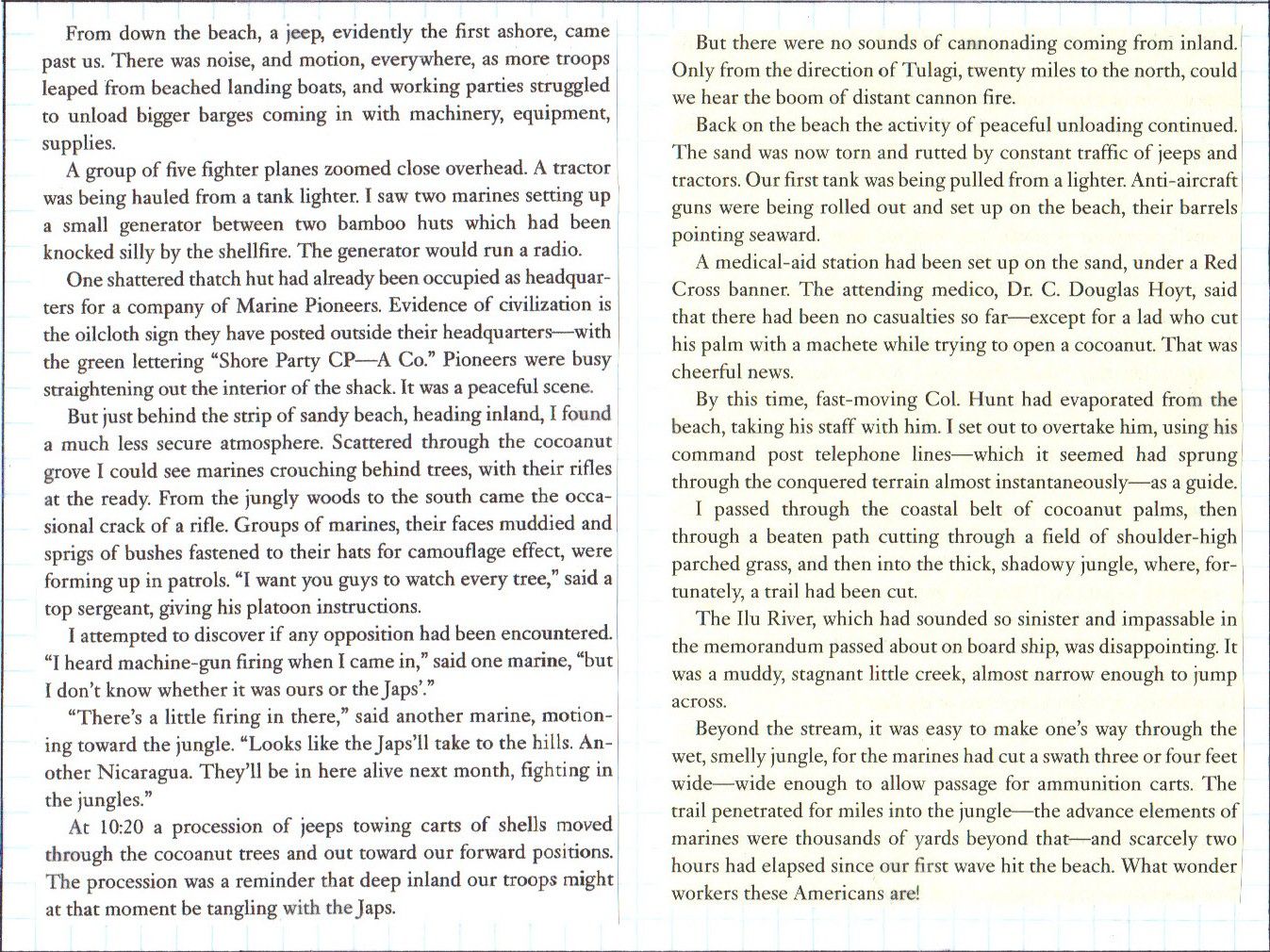
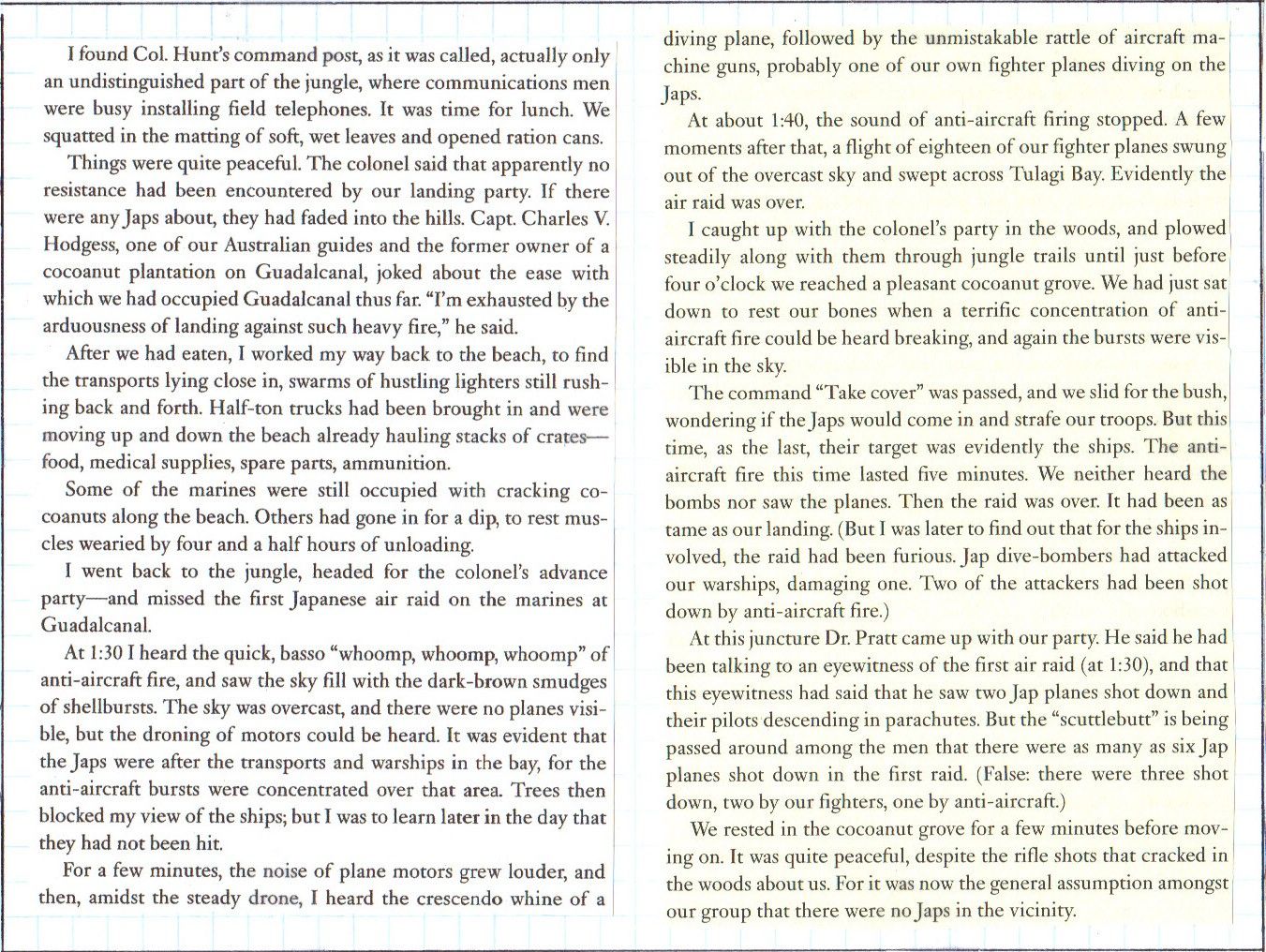

Richard Tregaskis, Guadalcanal Diary
"Friedrich Wilhelm Krüger commanded the police and SS forces of the Generalgouvernement.
On July 19, 1942, Krüger received an order from SS chief Heinrich Himmler that commanded him to assure 'that the resettlement of the entire Jewish population of the Generalgouvernement be carried out and completed by December 31.'
Krüger willingly obeyed."
"Helping Jews in any way was considered a crime.
Here a boy and his mother in the Przemysl (Poland) Ghetto attempt to sell some goods.
The woman and child would eat if they sold something, but the likelihood of that was slim because local authorities arrested anyone who engaged in commercial trade with Jews."
"Seated next to Massachusetts Senator Henry Cabot Lodge, Rabbi Stephen Wise (left) prepares to address a rally of 18,000 people in Madison Square Garden.
Speakers promised a day of reckoning for Nazi barbarity.
A gifted orator, Wise worked tirelessly to call attention to the plight of peoples under Nazi oppression.
When he learned of the implementation of the 'Final Solution,' he turned his energies to urging the Roosevelt administration to launch rescue efforts."
The short p5 blurb about the nazi woman Stoeppler with 10 sons in the army was interesting in that I wondered what the family status was once the war was over and all POW’s returned to Germany? I did a quick search but couldn’t find anything.
If you have never read Sakai’s biography “Samurai!”, do so. He wrote it with Martin Caidin and Fred Saito and it is a very good read. Amazingly, Sakai not only survived the war, he scored a couple more air-to-air kills while flying with only one good eye and fought off around fifteen Hellcats in his lone Zero to land safely when stationed on Iwo Jima in 1944.
Sakai, interestingly, was not shot up over Guadalcanal by a fighter. He attempted a bounce of what he thought were Wildcats but turned out to be Dauntless dive-bombers (Sakai identified them as Avengers in “Samurai!”). He got two, but their rear gunners shot through his unarmored canopy and grievously wounded him.
}:-)4
Thank you for all of your hard work. I have a large history library on the war, but have never read the day by day news releases from the period. This has been an immense help to see the period from the eyes of the public and domestic politics of the time. Even the advertisements are interesting. Thanks again for the great work.
Thanks for the tip on “Samurai!” I can’t believe the guy survived the war, but that is what he obviously was...a survivor!
More from the Sakai Wiki site:
http://en.wikipedia.org/wiki/Sabur%C5%8D_Sakai
About the same time, Sakai married his cousin Hatsuyo, who asked him for a dagger so she could kill herself if he fell in battle. His autobiography, Samurai!, ends happily with Hatsuyo throwing away the dagger after Japan’s surrender, saying she no longer needed it.
After the war, Sakai retired from the Navy. He became a Buddhist acolyte and vowed he would never again kill any living thing, not even a mosquito.[15] Sakai harbored no animosity toward those who had been “the enemy” during WW2, and urged others not to do so either. When asked about Japan’s eventual surrender, he responded: “Had I been ordered to bomb Seattle or Los Angeles in order to end the war, I wouldn’t have hesitated. So I perfectly understand why the Americans bombed Nagasaki and Hiroshima.”
Sakai expressed concern for Japan’s collective inability to accept responsibility for starting the war, and over the popular sentiment that only the military — not the political leaders — were responsible. He decried the kamikaze campaign as brutally wasteful of young lives; Sakai also drew attention with his critical comments about Emperor Hirohito’s role. “Who gave the orders for that stupid war?” he asked in an interview reported August 10, 2000, by The Associated Press. “The closer you get to the emperor, the fuzzier everything gets.”
Just months before he died, Sakai officially admitted to reporters that he still prayed for the souls of the airmen (Chinese, American, Australian and Dutch alike) he had killed in action. “I pray every day for the souls of my enemies as well as my comrades,” he said. “We all did our best for our respective countries...Glorifying death was a mistake; because I survived, I was able to move on - to make friends in the U.S. and other countries.”
Saburo Sakai died of a heart attack in 2000, following a U.S. Navy formal dinner - where he had been an honored guest - at Atsugi Naval Air Station. He was 84. Sakai had sent his daughter to college in the United States “to learn English and democracy.” There she married an American, and gave Saburo two American-born grandchildren. He is survived by all three.
Bump.
Disclaimer: Opinions posted on Free Republic are those of the individual posters and do not necessarily represent the opinion of Free Republic or its management. All materials posted herein are protected by copyright law and the exemption for fair use of copyrighted works.